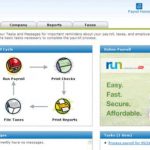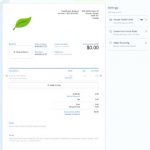Solved: Undeposited funds already deposited to bank account, but QB doesn’t “get” this
I’m here to help share some information about the default Undeposited Funds account in QuickBooks Online. Richard is the kind of man everyone likes to have around. He is totally committed to whatever he is doing whether it is working on a client’s estate plan, business valuations or vacationing with his family. I’d suggest consulting an accountant to help and guide how to record this. Your accountant can provide more expert advice in dealing with this concern so your account stays accurate. You are always welcome to post in the community if you have any other concerns or questions.
This account is created automatically as part of your business’s chart of accounts and cannot be deleted. If you try to do so, QuickBooks Online will just create a new Undeposited Funds account for you. As a QuickBooks ProAdvisor, I agree that the main dashboard can provide a clear sense of your organization and workflow. Using Pareto’s Principle, we know that 80% of the time, standard workflows are the order of the day.
What is an Undeposited Funds Account? Everything You Need to Know
QuickBooks doesn’t post these payments directly to your bank account because it knows there may be a delay before you deposit them. When they are deposited, QuickBooks allows you to pull them together into a single cash deposit on your bank register. “This how to improve your customer acquisition cost and grow roi can be fixed depending on how these deposits were being deposited. Let’s go over and open the original deposit to which the account should be deposited. From there you can add the payments and remove the manual line item to the sales/income acct.
If you follow the technical financial accounting you will see the end result is that Income or Sales has been credited and Cash or Checking has been debited. Both accounts receivable and undeposited funds accounts were used but came out with a $0.00 balance in the end. If this process is not handled correctly you run the risk of overstating income. As an example if you create the invoice and then deposit a check directly into the bank register without receiving the payment against the invoice you will overstate income. The reason is you have recorded the income when you created the invoice. You then would have most likely credited sales/income when you directly deposited the payment into QuickBooks.
- We make it a point to reconcile the balance sheet accounts every month when we are doing month-end closings.
- And, as with overstated revenue, this error can be avoided with proper workflows.
- Chances are you will occasionally receive payments from multiple customers and batch those into one deposit.
You can always reply to this post if you still have questions and I’ll get back to you as soon as I can.
Using QuickBooks Online to Track Client Sales
You can directly categorize your downloaded transactions. First, reconcile your bank accounts to make sure you have recorded all the deposits you have made. Once you have determined all deposits have been recorded properly, open the Bank Deposit screen again and review what is in the Undeposited Funds account.
Next steps: Manage bank deposits
If your bank records a single payment as its own deposit, you don’t need to combine it with others in QuickBooks. Instead, you can put the payment directly into an account and skip Undeposited Funds. When you follow the workflow to receive payment for an invoice, QuickBooks automatically puts them into Undeposited Funds. Now, when you check the Bank Register for your checking account, you can see the deposit posted for the correct amount. Now, select the invoice or invoices the customer paid.
Learn how to put payments into the Undeposited Funds account in QuickBooks Desktop. Continue entering payments received from your customers until all payments have been entered. Here’s what you need to know about QuickBooks Online’s Undeposited Funds account to keep your business accounting operations running smoothly.
Next Steps: Review your Undeposited Funds account
There are other very important reasons for understanding Undeposited Funds. But it is important that a business owner understands the power of this account. Undeposited Funds is an asset to your business because it shows on your Balance Sheet. If the undeposited funds balance is high, there should be more money coming into your business soon.
This image shows how Undeposited Funds will look on your balance sheet. If the payment is still not deposited within the given length of time, I’d suggest contacting our Merchants Services Support Team. This team is the best resource for such inquiries, as they’re able to request account information. They can also verify the status of the payment too and investigate why it wasn’t deposited into your account yet.
Not reconciling loan accounts
You’re correct, any payments that have already been matched and recorded as deposits can’t be done a second time. The QuickBooks balance is the total balance of all bank transactions that you’ve added or matched to QuickBooks. While the bank balance is your bank’s actual balance from the last bank feed update. If the Bank balance is lesser than your QuickBooks balance, there might be bank transactions that are causing the difference. I’d be glad to help share additional information about clearing up your undeposited funds account. If you find that the deposit was posted straight to Income in the bank feed, un-reconcile the transaction, undo the entry and then match the transaction properly.
But when it comes to accounting, 20% of transactions are enigmatic. Those transactions could result in your sanity going right out the window—along with your ability to file an accurate tax return. You may have selected “Group with Other Undeposited Funds” on a Sales Receipt.



